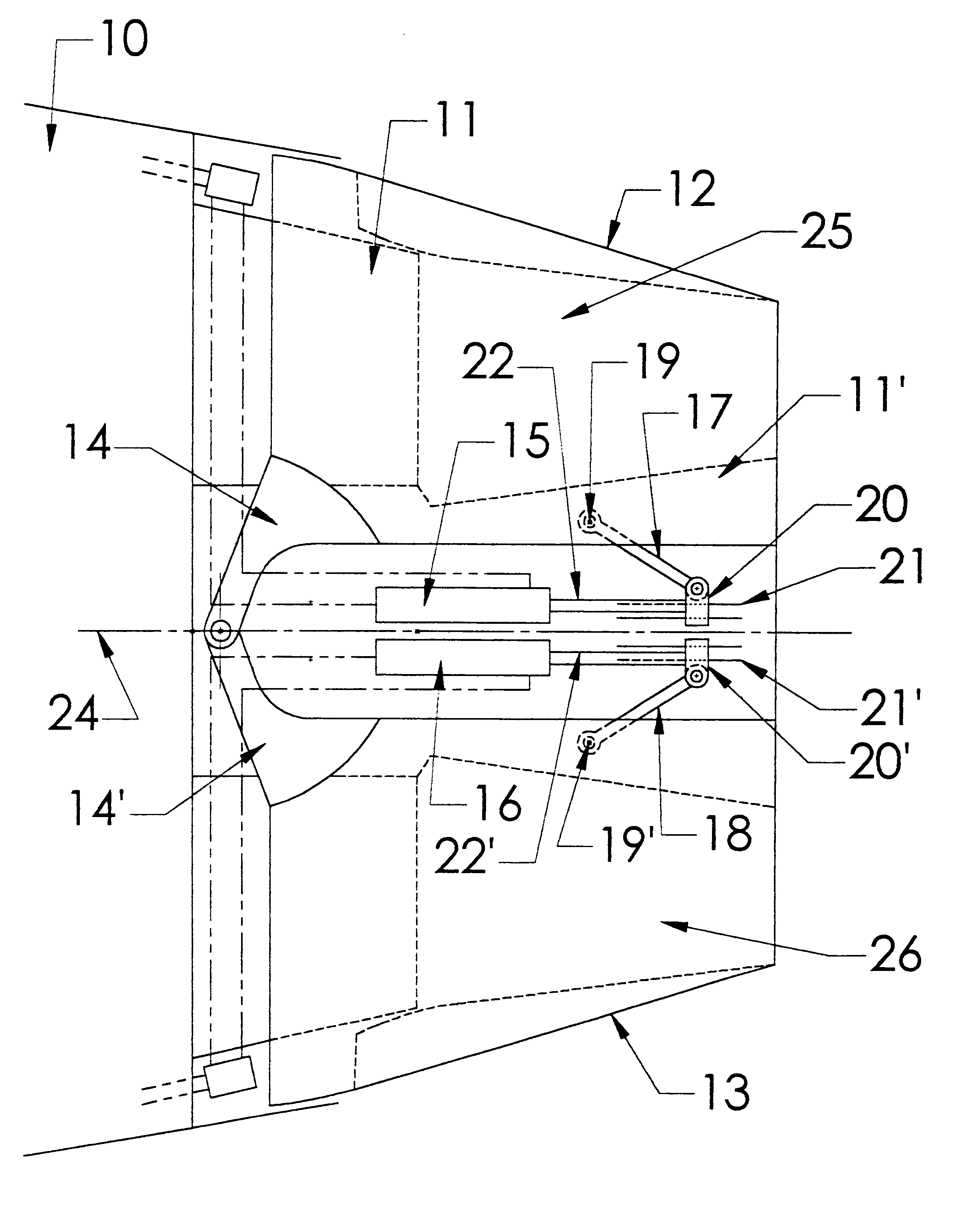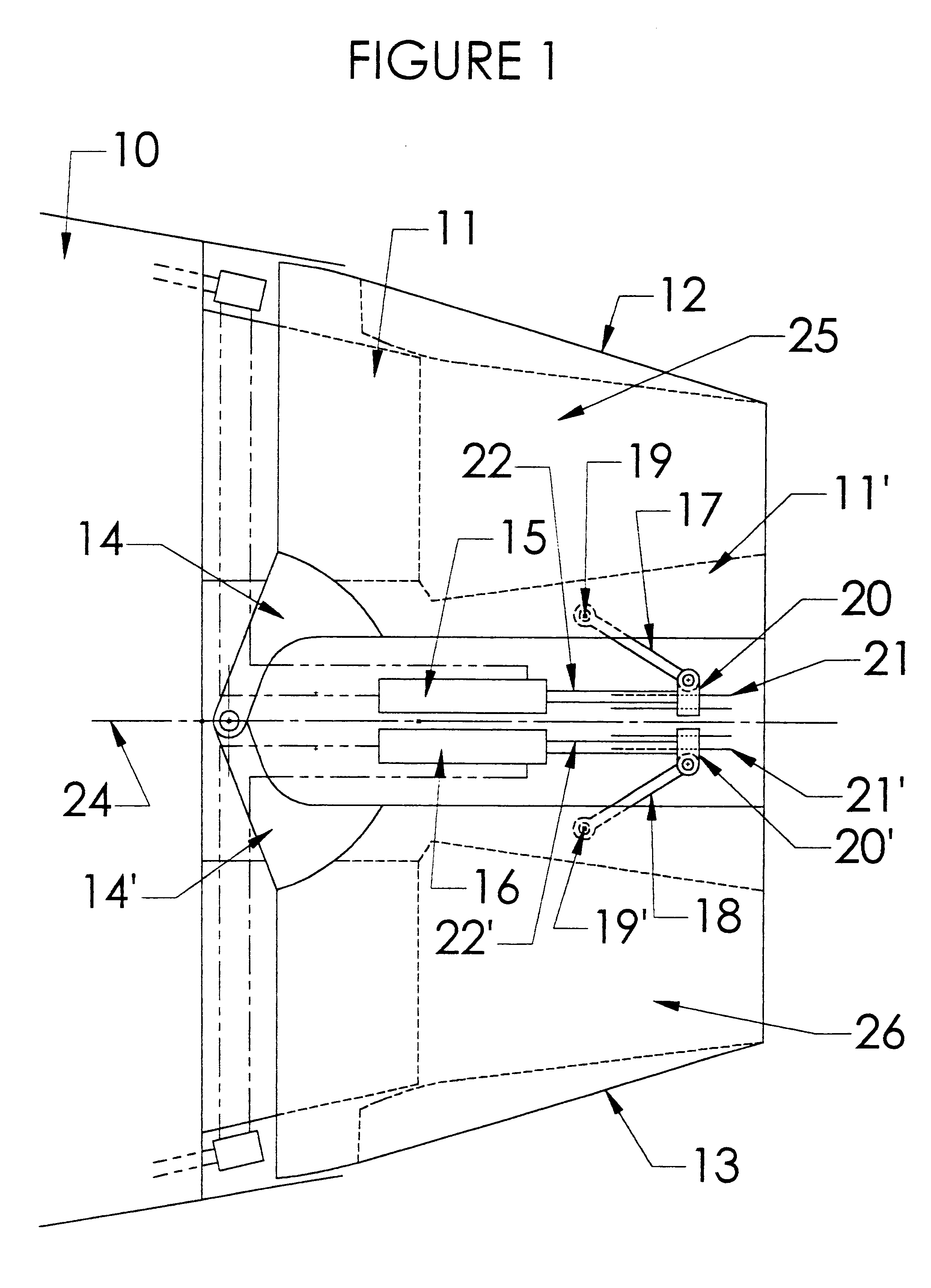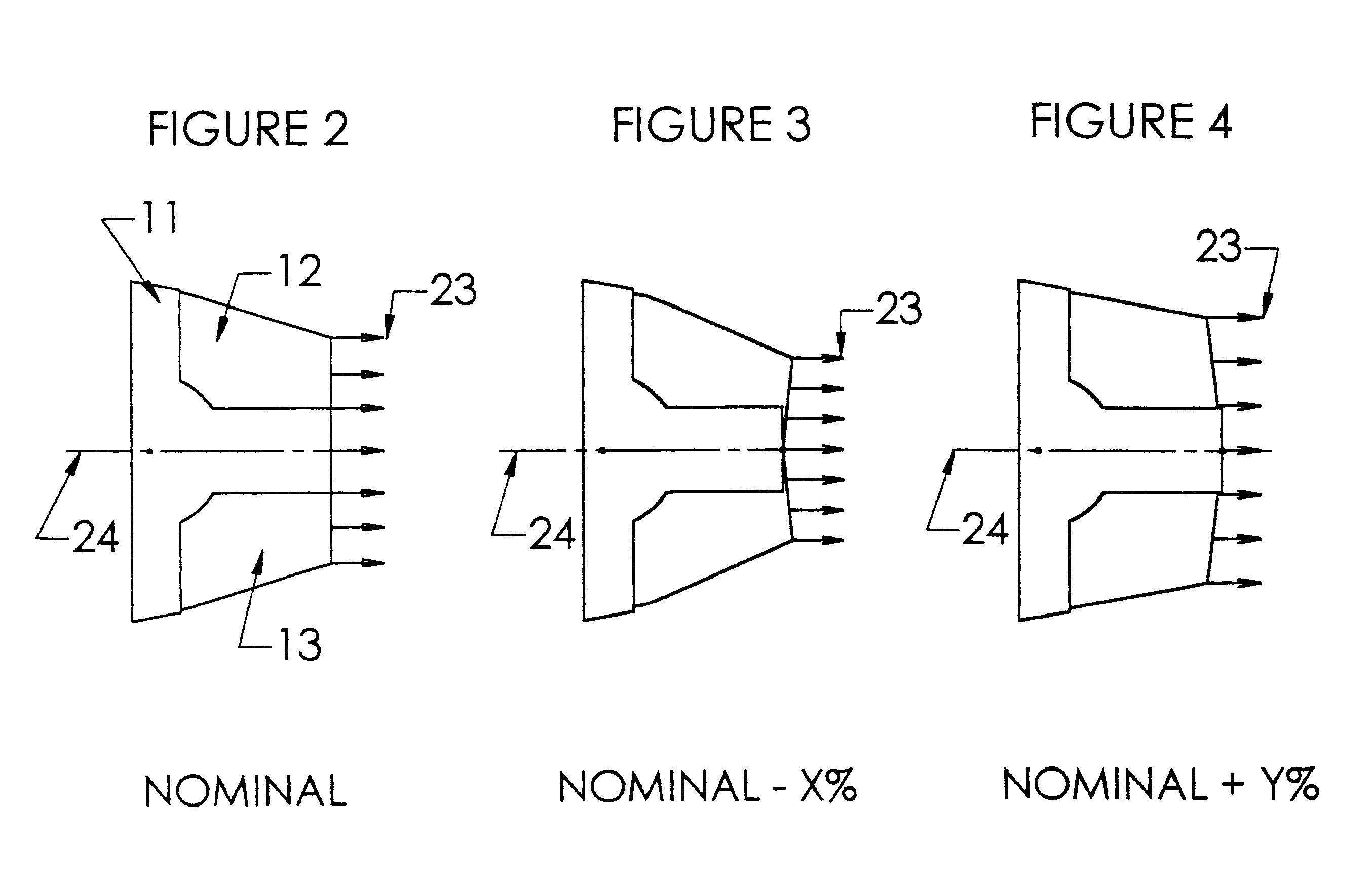Jet engine nozzle with variable thrust vectoring and exhaust area
a technology of jet engine and nozzle, which is applied in the direction of vessel construction, marine propulsion, aircraft navigation control, etc., can solve the problems of reducing aircraft efficiency, affecting the overall dispatch reliability and operational cost of business or commercial aircraft, and requiring a large amount of maintenance, so as to reduce the required landing speed of aircraft, improve the longitudinal stability of aircraft, and reduce the cost of maintenance.
- Summary
- Abstract
- Description
- Claims
- Application Information
AI Technical Summary
Benefits of technology
Problems solved by technology
Method used
Image
Examples
first embodiment
With reference to FIG. 1, in the present invention, a thrust vectoring and variable exhaust area nozzle 10 for a jet engine such as a turbo-fan is provided by a fixed structure 11, first and second pivoting shell 12 and 13, a sealing system (shown in FIG. 15), and first and second actuators 15 and 16. The fixed structure 11, also called a jet pipe, is the structure that provides the support for the two pivoting shells 12 and 13, and for the actuators 15 and 16. The fixed structure 11 cooperates radially and longitudinally with the two pivoting shells 15 and 16 through a sealing arrangement that ensures fluid tightness between the respective elements.
With continued reference to FIG. 1, the rear (aft) end of the jet engine generally designated 10, includes a jet pipe 11 in which two radial cutouts 25 and 26 are provided. The radial cutouts 25 and 26 are defined by the jet pipe extensions 11' (only one of which is shown as a result of the side view of the nozzle). The first and second ...
second embodiment
With reference to FIG. 10, the invention is shown in which like reference numerals refer to like elements. The difference between the embodiments shown in FIGS. 1 and 10 is that in the later embodiment the actuators 215 and 216 are connected to the shells 212 and 213 at points along the leading edge of the shells, and the later embodiment shows a nozzle with an internal convergent-divergent profile. The independent actuators 215 and 216 are connected to the jet pipe 11 through pivot connections 217 and 219, respectively. The actuators 215 and 216 are also connected to the shells 212 and 213 through pivot connections 218 and 220. As with the embodiment shown in FIG. 1, pivoting may be symmetrical to provide variable exit nozzle areas as shown in FIGS. 13 and 14. Alternatively, pivoting may be asymmetrical to vary the thrust vector angle as shown in FIGS. 11 and 12.
As also shown in FIG. 10, a first control arm 221 is pivotally connected to the first shell 212 through a pivot pin 222. ...
PUM
 Login to View More
Login to View More Abstract
Description
Claims
Application Information
 Login to View More
Login to View More - R&D
- Intellectual Property
- Life Sciences
- Materials
- Tech Scout
- Unparalleled Data Quality
- Higher Quality Content
- 60% Fewer Hallucinations
Browse by: Latest US Patents, China's latest patents, Technical Efficacy Thesaurus, Application Domain, Technology Topic, Popular Technical Reports.
© 2025 PatSnap. All rights reserved.Legal|Privacy policy|Modern Slavery Act Transparency Statement|Sitemap|About US| Contact US: help@patsnap.com



